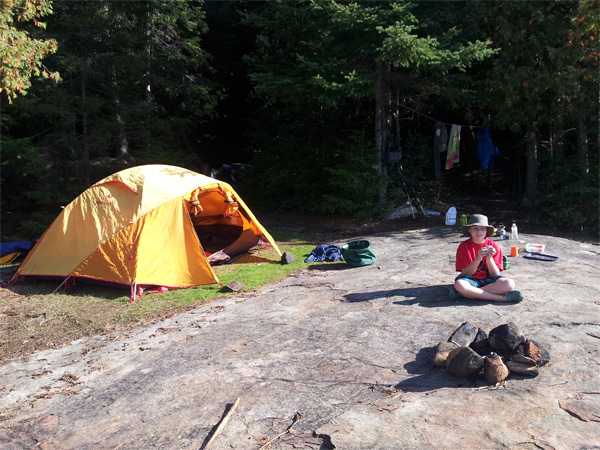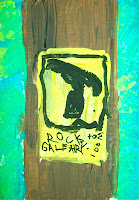
20 Apr Pt 6 :: How To Make Room For Autism In Your Canoe – Paddling & Eating
Dig this: April 2nd is World Autism Awareness Day (WAAD) and April is also known to many as Autism Awareness Month. This multiple part story/part guide is the tale (with tips) of how we got to the end of the portage with our son. We hope to help raise awareness about autism and the extra challenge it brings to lives of many families, including ours; we also hope this Making Room For Autism In Your Canoe “series” helps to inspire other families to get out there and live their dreams as best as they are able – because even though, with autism, our lives are different – they shouldn’t be less. ~Fiona
That tastes funny!
Another consideration for bringing children or people with eating sensitivities is how eating and preparing food in the outdoors can affect taste and texture. Especially when cooking over a fire. Makobe had many opportunities to eat meat and other types of food that had been cooked over a fire as we regularly do so as we visit Poppa Badger & Grammama’s land next door to us and camp. He will eat some of the items we cook over a fire but it is important we have a good coal base for cooking when preparing Makobe’s food. We cannot rush a cooking fire when he is around. If there is too much smoke flavor or black soot – he will not ingest it.
It is most important to consider all the aspects of a canoe trip when planning to take a sensory-sensitive person into the interior or backcountry – and practicing anything you think may become an issue at the campsite, before hand at home. Food intolerances can be tricky to deal with when on a canoe trip as space is tight (less choice) and the outdoor elements can alter texture and taste of some foods (food gets cold fast, rain can make everything wet and damp, etc.) But we noticed keeping Makobe physically active on trip (a natural by product of wilderness canoeing) kept him hungry and much more tolerant of what he put in his mouth.
Not just along for the ride:
Depending on the child, you may not wish to introduce the actual physical side of paddling until they are older or have shown they are interested. With Makobe, he liked to dip the canoe paddle in the water to create more of a resistance than to help paddle. He has some difficulty with it still (mainly because it can be hard work!) but has taken rather well to the simplicity of using a kayak paddle on a stand up paddle board. But the key to anything with Makobe (and autism) is motivation. It works much better if we have a destination in mind with a small tangible reward at the end of it for him. As for using a canoe paddle properly – still working on it!
Coming next: Backcountry or Car Camping?/Conclusion
To read all the parts to this story guide, click here: Making Room For Autism In Your Canoe
To read our report from Makobe’s first wilderness trip into Algonquin, please click here: Making Room For Autism In Your Canoe – A Trip Report
**Stim(s) or Stimming are the terms most used to describe a self-stimulatory behaviour or activity that is performed repetitively and usually to the alienation of others. Examples can be screaming, hand-flapping, finger play, rocking, spinning, lining up objects, verbal behaviour, etc.





Sorry, the comment form is closed at this time.